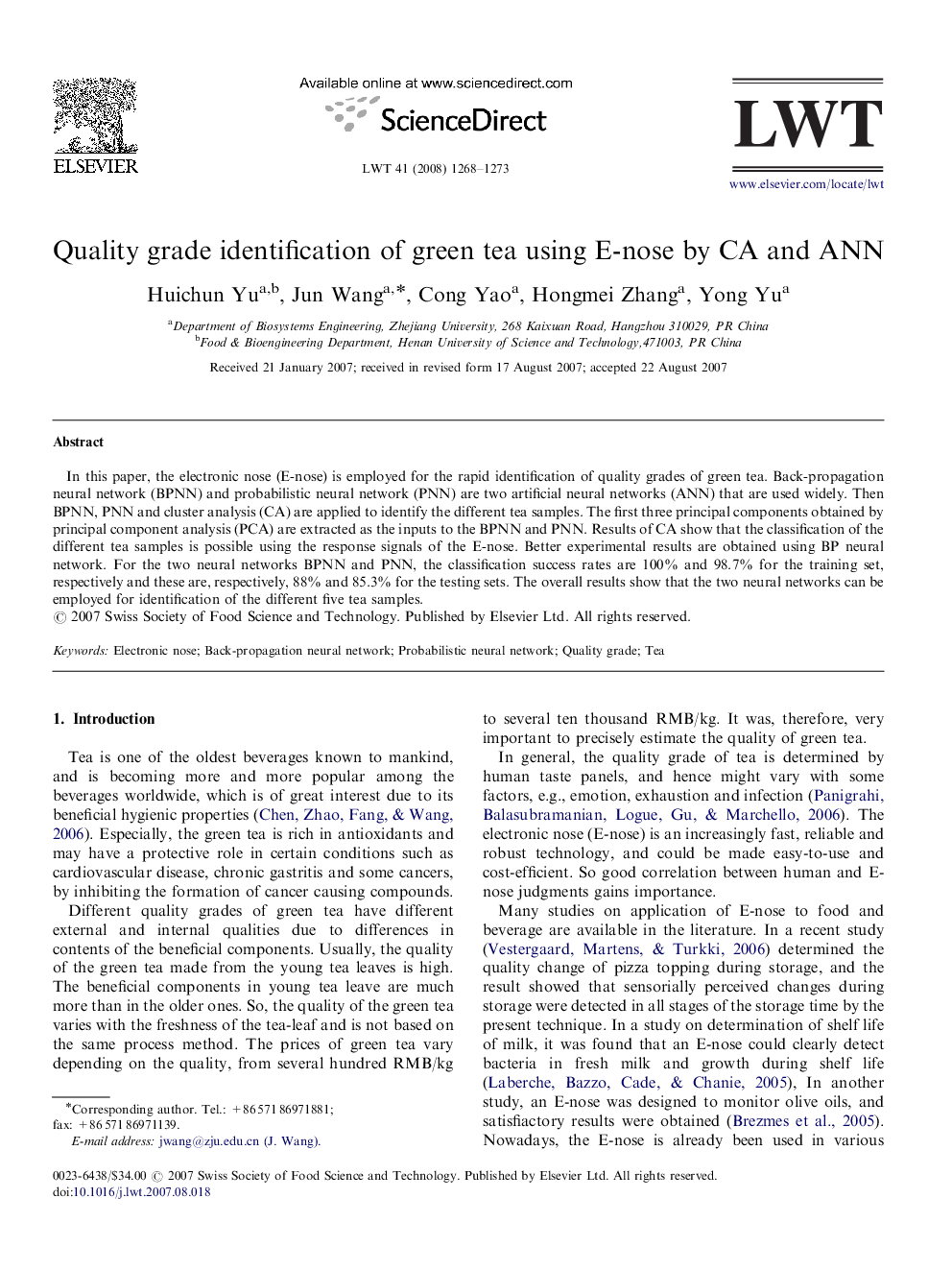| Article ID | Journal | Published Year | Pages | File Type |
|---|---|---|---|---|
| 4565184 | LWT - Food Science and Technology | 2008 | 6 Pages |
In this paper, the electronic nose (E-nose) is employed for the rapid identification of quality grades of green tea. Back-propagation neural network (BPNN) and probabilistic neural network (PNN) are two artificial neural networks (ANN) that are used widely. Then BPNN, PNN and cluster analysis (CA) are applied to identify the different tea samples. The first three principal components obtained by principal component analysis (PCA) are extracted as the inputs to the BPNN and PNN. Results of CA show that the classification of the different tea samples is possible using the response signals of the E-nose. Better experimental results are obtained using BP neural network. For the two neural networks BPNN and PNN, the classification success rates are 100% and 98.7% for the training set, respectively and these are, respectively, 88% and 85.3% for the testing sets. The overall results show that the two neural networks can be employed for identification of the different five tea samples.
